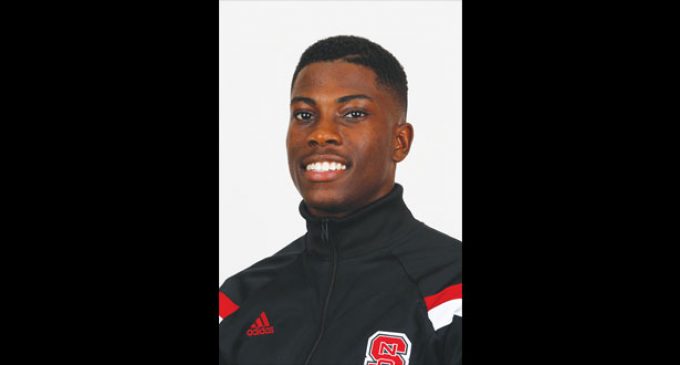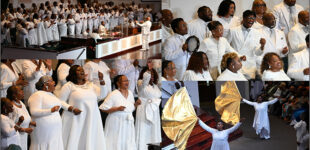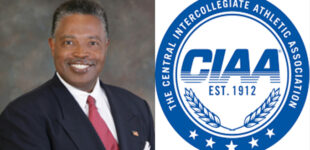Winston-Salem resident, N.C. State sprinter wonders about what could’ve been

In photo above: Expectations are high for Shannon Patterson as he moves forward in his college track career. (Photo by NC State Athletics)
In reflecting on his first season of college track at N.C. State, Shannon Patterson can’t help but wonder about what could’ve been. Even though Patterson missed most of the outdoor season due to mononucleosis, he made a strong impression in the minds of the coaching staff.
At the end of the indoor season in mid-February, Patterson, a freshman from Winston-Salem, became ill and didn’t get medical clearance to return until late April. In spite of his lengthy absence, he shaved a half-second off his best time in the 200-meter sprint and qualified to run the open 400 at the Atlantic Coast Conference outdoor championships two weeks ago. He also ran on N.C. State’s 4×100 relay that placed fourth at the ACC.
When Patterson returned, he had to make a decision about his immediate future. He could turn his total attention to being a sprinter and compete, or he could focus on his specialty, the 400-meter intermediate hurdles, and not compete this spring.
It’s hardly surprising that Patterson didn’t make an attempt to run the one-lap hurdles race. This event, arguably the most grueling in track and field, puts a premium on stamina and technique. The bout with mono caused him to miss too much of the training time which would’ve enabled him to develop endurance and sharpen his hurdling form.
As a result, Patterson, who graduated from Mount Tabor last year, focused on the sprints. Aside from the open 400 and the 4×100, he ran a leg on the 4×400. Wolfpack sprints/hurdles coach Tamara Ards is excited about the future.
“Shannon’s up-side is huge,” said Ards. “He’s an untapped talent who landed in our lap. I have to admit that I was pleasantly surprised with what he was able to do. When he came back, there wasn’t a lot of time left in the season.
“The key for him is that he has a big heart and he’s ferocious when it comes to training. During those few weeks, he got stronger and faster. It was easy to see that he’s just scratching the surface. I can’t wait for fall practice to start.”
At the time of Patterson’s return, the Wolfpack had two regular-season competitions remaining before the conference meet. Even though it was small window of opportunity, Patterson made it work to his advantage. A week before the ACC, he qualified for the open 400 (48.46 personal best) with a third-place finish in the Duke Twilight meet and he also won the 200 with a personal-best time of 21.64 seconds.
“With me being out for all those weeks, I thought I’d be red-shirted,” said Patterson, a Business Administration major. “Fortunately, I had a speedy recovery. Even with such a late start, I thought I could still qualify for the ACC.
“In my first meet back, I ran 48.6 (in the 400) and missed qualifying by a tenth-of-a-second. So, I felt real good about my chances when it was time for the next meet. I learned a lot about patience this year.”
“You come to understand that as long as you keep working hard, the desired results will come at some point. This was a productive year. I just took everything one step at a time. My sickness was the only setback.”
This summer figures to be a pivotal time for Patterson. Even though he’ll be a sophomore next school year, he’ll still be a virtual freshman in terms of running the intermediate hurdles.
The last time he ran hurdles was his senior year of high school. Patterson won’t run in any hurdles races this summer. Instead, he’ll engage in Ards’ workouts which are designed to reacquaint Patterson with the technical and timing aspects of the event.
Ards declined to reveal what her specific time expectations are for Patterson in the intermediates. One widely-accepted rule of thumb for predicting a time, is to add 1.5 to 2 seconds to the hurdler’s best time in the open 400.
Given that frame of reference, and assuming that Patterson has no injuries, the potential is there for him to run in the high 49s, low 50s, which would place him among the league’s top five (based on times at the ACC meet earlier this month). Patterson embraces the challenges the event presents.
“It’s a difficult race,” he said. “You have to stay relaxed and not get overanxious. Just trust in your technique and training, and don’t over-think it. The 400 hurdles is a fight to the finish.”
In high school, Patterson didn’t become a full-time hurdler until his junior year. As a senior, he was fifth in the 300 hurdles at the state outdoor championships and fifth in the 55 hurdles at the indoor state meet. That same winter, Patterson was the state runner-up in the 300-meter dash.
“Coming out of high school, it was hard to tell just where we might put him,” said Ards. “He hadn’t run that many open races. But we knew he had all the tools. Given Shannon’s confidence and his willingness to work, I expect him to do well as a sophomore. He ran a 47 (seconds) split in the 4×400 relay at conference, and he’s going to improve on that. Who knows what would have happened this year if he hadn’t gotten sick?”














